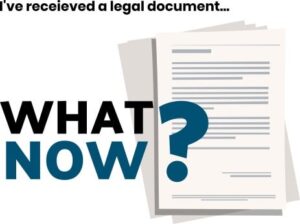The doctrine of unconscionable conduct generally attempts to avoid one party exploiting the vulnerability of another party. Unconscionable conduct typically applies when a party to a transaction was under a special disadvantage, and another party knew and took advantage of this special disadvantage.
Difference between undue influence and unconscionable conduct
Deane J in the case of Commercial Bank of Australia Ltd v Amadio[2] explained the distinction between a cause of action in undue influence and a cause of action in unconscionable dealings:
“Undue influence, like common law duress, looks to the quality of the consent or assent of the weaker party…. Unconscionable dealing looks to the conduct of the stronger party in attempting to enforce, or retain the benefit of, a dealing with a person under a special disability in circumstances where it is not consistent with equity or good conscience that he should do so.
Elements of unconscionable conduct
The three elements of unconscionable conduct are as follows:
- Element 1 – There must be a special disadvantage between the parties.
- Element 2 – There must be an unconscientious taking of that advantage.
- Element 3 – The defendant is unable to establish that the transaction was fair, just, and reasonable.
Element 1 – Special disadvantage
There must be a special disadvantage or disability between the parties.[3] The condition must be one which “seriously affects the ability of the innocent party to make a judgement as to his own best interests”.[4] The courts have provided some examples of what may constitute a special disadvantage, including: “poverty or a need of any kind, sickness, age, sex, infirmity of body or mind, drunkenness, illiteracy or lack of education, lack of assistance or explanation where assistance or explanation is necessary”.[5]
Element 2 – Unconscientious taking of advantage
There must be an unconscientious taking of the advantage by the dominant party.[6] Actual or constructive knowledge by the advantaged party is sufficient to establish this element.[7] The knowledge possessed by the advantaged party further relates to the question of whether the disadvantaged party has been victimised by the advantaged party as a result of this knowledge.[8]
In the High Court case of Louth v Diprose [1992] HCA 61, the High Court held that the appellant, Louth, had victimised the respondent, Diprose, by taking unfair advantage of his affections for her. In this case, the appellant told the respondent that she was about to be evicted from her home and that she would commit suicide if this occurred, thereby convincing the respondent to buy the house the appellant was living in and put the house in her name at her insistence. In reality, the appellant was under no threat of eviction, and she later refused to transfer the property to the respondent when their relationship subsequently broke down.
The High Court held that the respondent suffered from a weakness relating to his affections for the appellant, and that the appellant was aware of this and used this emotional dependence to influence the respondent’s actions and decisions to her own advantage.[9]
Element 3 – Fair, just, and reasonable
If the transaction in question was fair, just, and reasonable, a cause of action in unconscious dealings will fail. The onus is on the dominant party to show the transaction was fair, just, and reasonable.[10] To establish this, the courts will usually look at whether independent advice was given to the disadvantaged party in relation to the transaction.[11] If the defendant is unable to prove the transaction was fair, just, and reasonable, it can generally be established that there has been an equitable breach through unconscionable dealings.
Codification
Although this cause of action exists in equity, unconscionable conduct is also prohibited by various pieces of legislation, including the Australian Securities and Investments Commission Act 2001 (Cth) and the Australian Consumer Law, which is found under Schedule 2 of the Competition and Consumer Act 2010 (Cth).[12]
For when you need assistance
If you have entered into a contract and there has been unconscionable conduct, Gibbs Wright Litigation Lawyers can assist both plaintiffs and defendants in bringing or defending a claim.
Call Gibbs Wright for a no-cost, obligation-free consultation about your unconscionable conduct matter.
References
- Paroz v Paroz & Ors [2010] QCA 362 [11]; Blomley v Ryan (1956) 99 CLR 362, 415; Commercial Bank of Australia Ltd v Amadio (1983) 151 CLR 447, 489. ↩
- (1983) 151 CLR 447, at [13] ↩
- Commercial Bank of Australia Ltd v Amadio (1983) 151 CLR 447, 462. ↩
- Ibid. ↩
- Blomley v Ryan (1956) 99 CLR 362, 405. ↩
- Commercial Bank of Australia Ltd v Amadio (1983) 151 CLR 447, 474. ↩
- Kakavas v Crown Melbourne Limited (2013) 250 CLR 392 [151]; Commercial Bank of Australia Ltd v Amadio (1983) 151 CLR 447, 467. ↩
- Louth v Diprose (1992) 175 CLR 621, 637. ↩
- Louth v Diprose [1992] HCA 61 at [9]. ↩
- Commercial Bank of Australia Ltd v Amadio (1983) 151 CLR 447, 422-423. ↩
- Ibid. ↩
- Competition and Consumer Act 2019 (Cth) Sch 2 ‘Australian Consumer Law’. ↩





